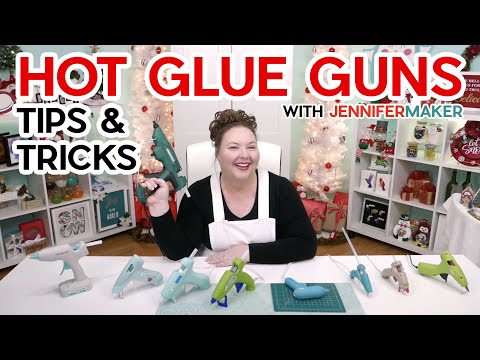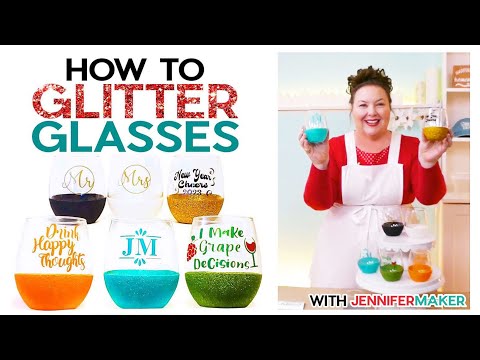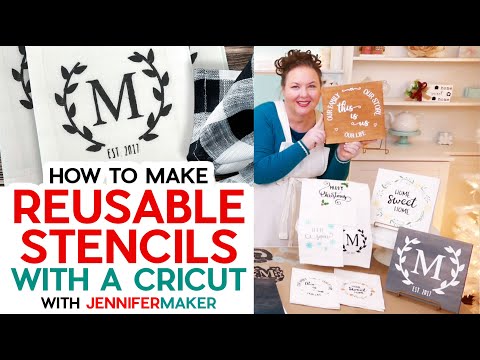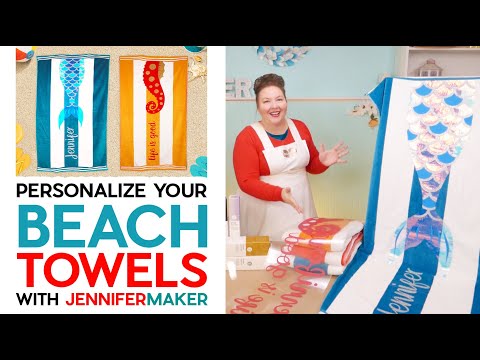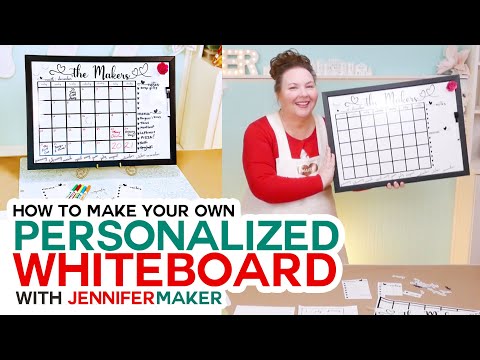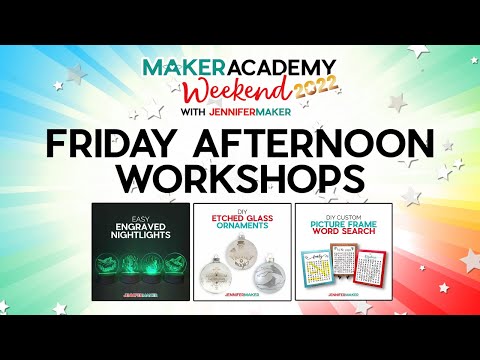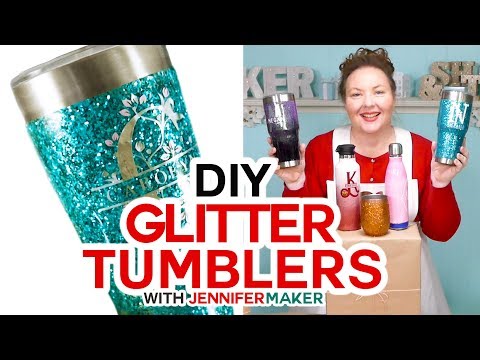Hot Glue Guns: Tips, Tricks, and Hacks for Better Crafts!
[videojs youtube=”http://www.youtube.com/watch?v=Ct6WLxtLxac”]
Shop for hot glue guns shown in this video at my affiliate link: https://a.co/7qwthMq
So many projects, mine included, call for hot glue. I feel like hot glue is the duct tape of the craft world, because we use it for SO many things and it does a great job keeping unusual things together. If you’re new to the idea of using hot glue, the way it works is we use a special tool called a “hot glue gun” to heat a rod of special adhesive with a continuous heating elements that melts the glue and then pushes it out through the tip when you pull the trigger. I have several glue guns for us to look at!
I separate glue guns into different categories:
1. The first category is CORDED or CORDLESS. Corded glue guns are the most common, and honestly, also the most reliable. That’s because most battery-powered glue guns tend to run out of batteries just when we need them, and I also notice that they sometimes struggle to get hot enough fast enough. The biggest advantage to a cordless glue gun is that they can go anywhere and you don’t have a cord dragging around, messing up your stuff.
2. The next category of glue guns is SIZE. Some glue guns use mini hot glue sticks, while others use regular size glue sticks. There are even some jumbo sizes, but they are pretty rare. You should know which one your glue gun uses so you use the right size when it’s time to get more glue sticks, yes, but there’s more to it than that. The mini glue guns can deliver the hot glue in smaller amounts, which can be really useful for smaller crafts. The biggest downside to a mini glue gun is that the glue options are limited. The best mini glue gun I’ve ever used is the Cricut Glue Gun. It comes with the best mini glue sticks I’ve found — they aren’t anywhere near as messy as others I’ve tried. Fewer drips and less strings. It doesn’t have a stand, but you can just lay it down like this and it doesn’t cause any arm nor does it drip. Another thing I like about this glue gun is the the trigger has a more controlled output than other mini glue guns I’ve tried. And the tip is a really small diameter, so I don’t get huge globs of glue.
3. The third category of glue guns is TEMPERATURE. You can get low temp glue guns, high temp glue guns, and even dual temp glue guns. So then the question is — what does temperature matter? Low temp is good for more delicate things, like foam, lace, lightweight fabric, that sort of thing. Low temp is also a little more forgiving if it gets on your skin, to be honest. Low-temp glue has a higher viscosity, so it melts at a lower temperature, at about 170 to 250 degrees farenheit. That’s still pretty hot! But the lower temp does give you more flexibility and it will let you reposition things a bit before it cools, too.
High temp is better for heavier materials that need a strong bond, like metal, wood, plastics, and ceramics — basically, anything non porous. High temp glue melts at around 380 degrees Fahrenheit, and some high temp glue guns can go up to 450 degrees Farenheit, which is super hot! If you get that on yourself, we’re talking third degree burns, so be careful if you’re using one of these. I find that this is the most common glue gun — the Cricut glue gun is also a high temperature glue gun, for example. If a glue gun doesn’t give it’s temperature on the package, it’s probably a high temp glue gun. So when you go to get new glue sticks, you’ll want high temp or dual temp glue sticks for it.
Some glue guns offer BOTH temperatures, and we call this a dual temperature glue gun. If you use this type, be sure to use dual temperature glue sticks, too.
So let’s talk about some tips and tricks for using your glue gun!
============
Follow me at:
Blog: https://jennifermaker.com
Facebook Page: https://www.facebook.com/jennifermakercrafts
Facebook Group: https://www.facebook.com/groups/cricutcraftersandmakers/
Instagram: https://www.instagram.com/jennifer.maker
Pinterest: https://www.pinterest.com/jenuinemom
Please subscribe to my channel at https://www.youtube.com/c/jennifermaker for more video tutorials to craft a life you love!
Credits:
Introduction: PixelBytes (my child!)
Music: Cute by Bensound (licensed, royalty and copyright free)
Videography: Jennifer Marx on a Panasonic Lumix FZ-1000 DSLR 4K camera
Design: A Jennifer Maker original!

